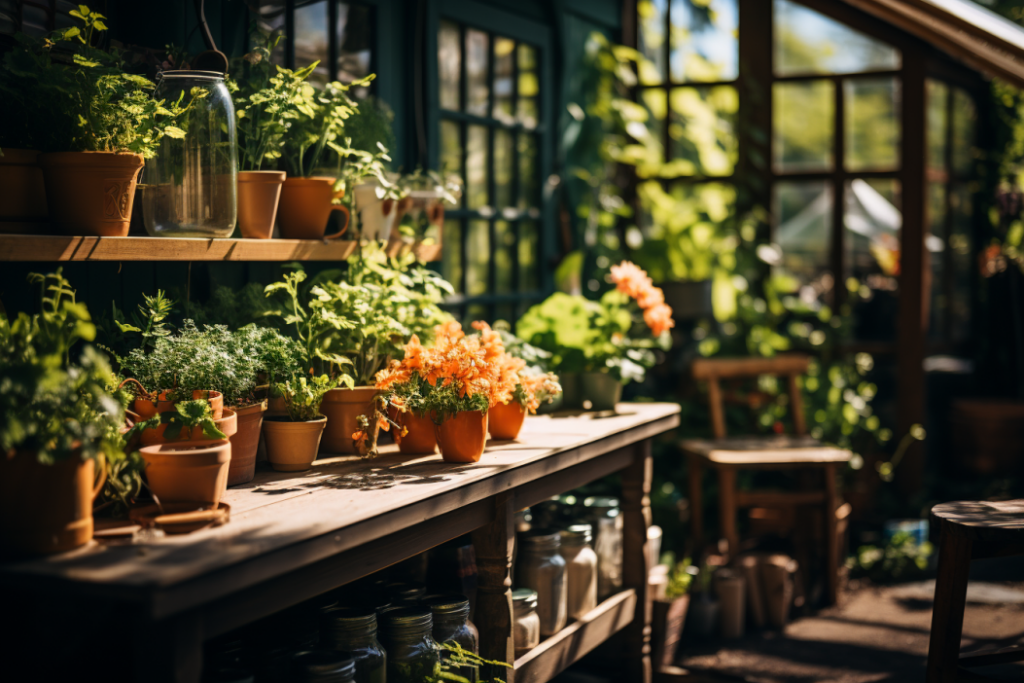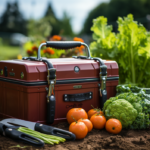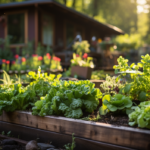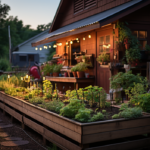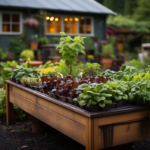Table of Contents
Achieving a Bountiful and Sustainable Harvest: Everything You Need to Know to Begin Your Kitchen Gardening Adventure
Do you love to cook and crave the taste of homegrown herbs and veggies? Starting your own kitchen garden might be just what you need! It’s a great way to save money, reduce waste, and enjoy fresh produce right at your doorstep. Growing your own food is also an excellent way to reconnect with nature and reduce your carbon footprint. If you’re a beginner, starting a kitchen garden might seem daunting, but with our ultimate guide, you’ll learn the essential tips and tricks to get started. From choosing the perfect location and soil to selecting the right plants and tools, we’ve got you covered. So roll up your sleeves and let’s get planting!
Choosing the Perfect Location for Your Garden
Starting a garden can be both fun and rewarding, but the first step towards success is choosing the right location. Here are some essential aspects you should consider when picking the perfect spot for your kitchen garden:
Sunlight
Most plants require at least six hours of direct sunlight per day to thrive, so look for a location that gets plenty of sunlight. South-facing gardens are an excellent option because they receive the most sun throughout the day. However, if your garden is not south-facing, don’t worry – you can still grow plenty of plants, as long as you choose sun-loving varieties and make the most of the light you have.
Soil
The quality of your soil can make or break your garden, so it’s essential to choose a location with good soil. Look for soil that is loose, fertile, and has good drainage. Avoid areas where water tends to collect, as this can lead to waterlogged soil and root rot.
Accessibility
You’ll be spending a lot of time working in your kitchen garden, so make sure it’s easily accessible. Consider placing it near your kitchen or backdoor, so you can quickly grab herbs or veggies when cooking. Also, ensure that the location is easy to get to with your garden tools and watering cans.
Protection
Lastly, consider protecting your garden from pests and other environmental factors. If your garden is near trees or other plants, make sure they don’t cast too much shadow on your garden. Additionally, you might consider installing some fencing or netting to keep out pesky critters like rabbits and deer.
Selecting the right location is crucial to a thriving kitchen garden. Follow these tips, and you’ll be well on your way to enjoying fresh, homegrown produce right in your backyard.
Selecting the Best Soil for Your Plants
The success of your kitchen garden can depend heavily on the quality of your soil. Here are some essential tips to keep in mind when selecting the best soil for your plants:
Determine your soil type:
Having an understanding of your soil type can be beneficial when choosing plants for your kitchen garden.
• Sandy soils are lightweight and drain quickly.
• Clay soils are thick and drain slowly.
• Loamy soils are typically the best for gardening because they contain a healthy mix of sand, silt, and clay.
Check the pH levels:
The pH level of your soil indicates its acidity or alkalinity, which can impact the growth of your plants. Most vegetables and herbs prefer a slightly acidic soil with a pH level between 6 and 6.8. You might want to get a soil testing kit to measure the pH level of your soil.
Add organic matter:
Enriching soil with organic matter, such as compost, is an excellent way to improve soil quality. Organic matter can help sandy soil hold more moisture, while it can help loosen clay soils.
Use fertilizers:
If your soil is lacking essential nutrients that promote plant growth, using a fertilizer is recommended. While there are synthetic fertilizers available, organic alternatives usually are safer and more environmentally friendly options.
Consider container gardening:
If you don’t have enough soil space available or aren’t sure about the quality of your soil, you can create a kitchen garden in containers! Container gardening offers plenty of opportunities for experimentation when selecting soil and individuals can enjoy having their own fresh produce in limited quite literally limited space.
By keeping these essential tips in mind and preparing the soil accordingly, you will have a head start on success when it comes to planting your favorite vegetables and herbs!
Picking the Right Plants for Your Garden
One of the most exciting aspects of starting a kitchen garden is choosing which plants to grow. With so many options available, it’s essential to select the right plants that suit your taste and growing conditions. Here’s what you need to know.
Consider Your Growing Conditions
Different plants have different growing requirements, and it’s essential to choose plants that are suitable for your local climate, soil, and available sunlight. Some plants require full sun to thrive, while others prefer partial shade. Some plants thrive in moist soil, while others prefer soil that dries out between waterings. Make sure you understand your growing conditions before selecting plants for your kitchen garden.
Choose What You Like to Eat
When selecting plants for your kitchen garden, it’s essential to choose what you like to eat. If you’re a fan of tomatoes, peppers, and herbs, then consider planting them in your garden. Not only will you save money, but you’ll also enjoy the satisfaction of cooking with fresh ingredients grown by you.
Consider the Size and Growth Habits
Before planting, make sure to check the size and growth habits of your chosen plants. Some plants, like tomatoes or cucumbers, require stakes or cages for support, while others, like basil or lettuce, stay small and compact. Make sure you have enough space to accommodate your chosen plants and plan for their growth accordingly.
Start with Easy-to-Grow Plants
If you’re a beginner, it’s a good idea to start with easy-to-grow plants like herbs, lettuce, or radishes. These plants have minimal requirements and are quick to mature. As you gain more experience, you can experiment with more challenging plants.
In summary, choosing the right plants for your kitchen garden is an exciting process that requires careful consideration of your growing conditions, personal taste, and the plant’s size and growth habits. With these factors in mind, you can select the perfect plants for a bountiful and fulfilling harvest.
Essential Tools and Gear for Your Kitchen Gardening Adventure
Starting your own kitchen garden is an exciting experience that requires the right tools and equipment to get you started. As a beginner, selecting the correct tools might seem like a daunting task, but don’t worry, we’ve got you covered. In this section, we’ll be walking you through the essential tools and gear that you’ll need for your kitchen gardening adventure.
Digging Tools
Digging tools are necessary for your kitchen gardening adventure as they allow you to loosen soil, make holes for seedlings, and plant your favorite herbs and veggies. Some of the essential digging tools you’ll need include:
- Hand trowels
- Hori-hori knives
- Pruners
- Spades
Watering Tools
Watering is crucial for the growth and survival of your plants, especially during hot and dry weather conditions. Some of the essential watering tools for your kitchen garden include:
- Water hoses or watering cans
- Sprinkler heads or misters
- Timers for automatic watering
Protection Tools
Protecting your plants from harsh weather conditions, pests, and plant diseases is vital in ensuring healthy and bountiful produce. Some of the essential protection tools you’ll need include:
- Garden gloves
- Sun hat and sunscreen
- Insect repellent
- Netting to keep birds and rodents away
Composting Tools
Composting is an excellent way to build rich soil and nourish your plants with essential nutrients. Some of the essential composting tools include:
- Compost bins or tumblers
- Compost turners
Having the right tools and gear is fundamental to your kitchen gardening success. With the right selection of tools, you can make the planting, maintenance, and harvesting process easier, enjoyable, and more organized. Invest in high-quality tools that are durable, comfortable, and fit your needs. Happy gardening!
Conclusion
Starting your own kitchen garden can be an exciting and rewarding experience. With the right guidance and preparation, you can grow your own herbs, veggies, and fruits and enjoy the benefits of delicious, healthy, and homegrown produce. The essential aspects covered in our ultimate guide will help you get started with confidence and ease. Remember to choose the perfect location, soil, and plants for your garden and equip yourself with the essential tools and gear. With the right approach and dedication, your kitchen garden will flourish, and you’ll enjoy fresh and organic produce for months to come. So what are you waiting for? Start your kitchen gardening adventure now and reap the rewards!

